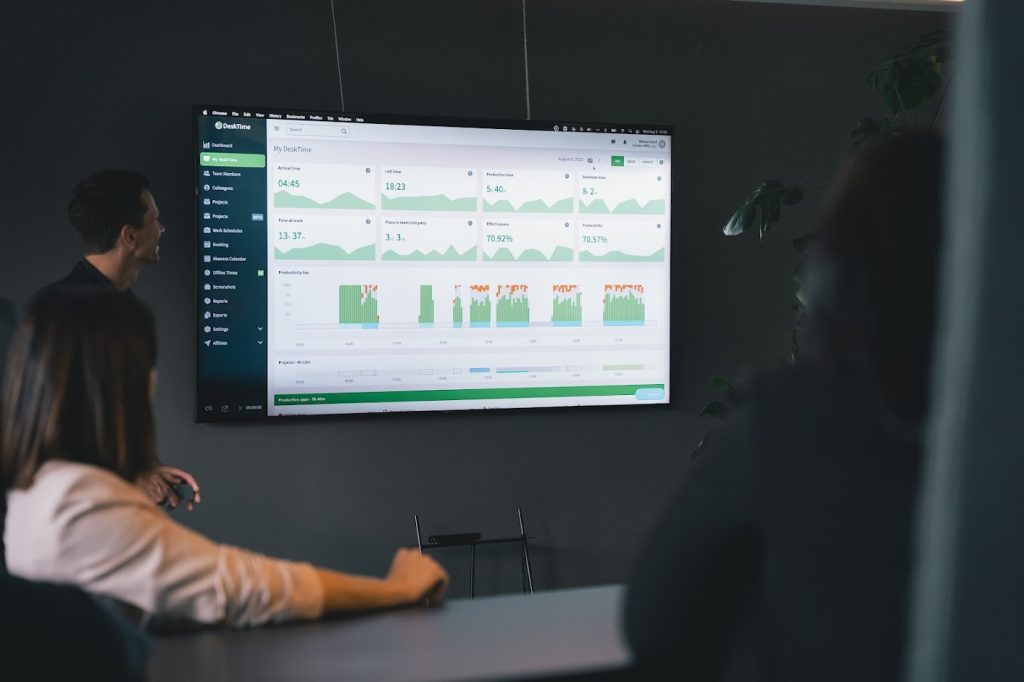How to identify your low performers

Recently, Meta made headlines by laying off 3,600 people, claiming to specifically target underperforming employees. This has understandably sparked discussion on how to identify low performers.
As any manager knows, it isn’t always obvious—poor performance can be subtle, like appearing busy without contributing meaningful work. With that in mind, we will take a look at common signs of underperformance, how to reliably identify it, and why that’s important for any organization.
Want to get the most out of your time?
Try DeskTime for free!
Try free for 14 days · No credit card required.
By signing up, you agree to our terms and privacy policy.

How to identify low performers: Signs to watch for
Simply put, a low performer is an employee who fails to meet expectations over an extended period.
While anyone can have an occasional slow or inefficient day, it becomes a concern when it happens regularly. A low performer not only fails to meet individual expectations but also puts pressure on teammates who may have to pick up the slack. Needless to say, this is something any team or organization would want to avoid.
Here are 6 examples of what low performers may look like in action:
- Slow or inefficient work
A low performer often takes longer than others to complete tasks or misses deadlines. They might struggle with time management, get easily distracted, or just lack a sense of urgency. Instead of staying on top of their workload, they may require reminders or supervision to keep things going.
- Poor quality of work
When someone isn’t performing well, the quality of their work can suffer—whether it’s unfinished, incorrect, or simply sloppy, it fails to meet expectations. As a result, revisions and corrections become necessary, requiring additional time and effort from both the culprit and their colleagues.
- Resistance to feedback
Instead of taking constructive criticism as an opportunity to improve, low performers may become defensive, ignore it, or blame external factors. This makes it difficult for them to grow in their role and can lead to ongoing performance issues.
- Lack of enthusiasm or engagement
A low performer may appear generally disinterested in their work. They might do the bare minimum, avoid team discussions, and rarely take any initiative. Such a disengaged colleague who merely goes through the motions can negatively affect the morale of their teammates.
- Inconsistent effort
With some employees, you never know what to expect on any given day. They might deliver great work one day and not show up at all the next. In other words, their efforts are inconsistent, and this up-and-down performance makes it difficult for managers and coworkers to rely on them.
- Lower performance compared to colleagues
An employee may produce acceptable work yet still be considered a low performer if their peers are outperforming them. For example, in a team where everyone meets their KPIs, those who perform adequately may still lag behind more exceptional colleagues.
In the case of the Meta layoffs we mentioned, some employees were surprised by the decision, as they had generally maintained a good track record. However, with a specific headcount reduction target in mind, Meta likely dismissed some employees who were meeting expectations—but not excelling.
Now, let’s discuss how to reliably identify employee underperformance.

How to identify poor performance: Strategies and tools
For any team or organization, one of the top priorities is having a high-performing staff. This means continuously monitoring productivity and, especially, identifying employees who might be struggling.
However, sometimes low performers are not easy to spot—it’s not as simple as catching someone blatantly sleeping at their desk. Poor performance can manifest in subtle ways—for example, some employees may appear busy but contribute little of real value, or their shortcomings may be masked by a strong team.
That’s why you need reliable insights based on data and robust feedback collected over an extended period.

Want your business to thrive?
Boost your team’s productivity and efficiency ratings with time tracking!
Use time tracking
Strong productivity is built on good time management. To put it simply, it’s about managing your efforts efficiently throughout the workday and avoiding distractions. However, unless you resort to micromanaging, it’s hard to get a clear picture of how your staff manages their time. Time tracking can help solve this issue.
Time tracking software provides detailed insight into how employees spend time at work. With DeskTime, you can see how employees structure their workday and how much time is spent on specific apps and websites.
This data offers insights into employee performance patterns, allowing managers to reliably determine how to identify low performers, for example, if someone is working fewer hours than expected or getting distracted by social media.
Check out all the features and try the free demo to get a feel for what being in control of time management is like.

Gather feedback
Feedback from managers, colleagues, and customers is vital for understanding how to identify low performers in areas that are harder to quantify, such as collaboration, interpersonal skills, and cultural fit.
Here are some tips on how to make the most of it:
- Consider 360-degree feedback
360-degree feedback involves collecting input from various sources—usually managers, colleagues, customers, and the employee’s self-assessment. This gives a clearer picture of the employee’s strengths and areas for improvement. For example, an employee might get positive feedback from a manager but less favorable responses from peers—which could signal communication or teamwork issues.
- Conduct regular one-on-one meetings
It’s a good idea to have frequent check-ins between managers and employees. These meetings allow managers to provide real-time feedback, gauge an employee’s job satisfaction, and proactively address any concerns. For example, if an employee seems disengaged or overwhelmed, a timely check-in provides an opportunity to address the issue before it negatively affects their work.
- Observe workplace behavior
Not all feedback comes from formal reviews—observing day-to-day interactions can reveal valuable insights about an employee’s contributions. For example, paying attention to how an employee participates in team meetings can indicate their level of initiative and willingness to contribute ideas.

Set clear and measurable KPIs
To get a good idea of employee performance, it’s important to establish Key Performance Indicators (KPIs) and review them regularly.
Here are the most important considerations for this to go smoothly:
- Align KPIs with company goals and individual roles
In general, KPIs should serve as a bridge between individual performance and wider organizational strategy. For example, if the company’s goal is to increase market share, KPIs should reflect this objective.
Then, tailor KPIs to the responsibilities and objectives of each position. For example, sales teams could focus on metrics such as revenue generated, the number of new clients acquired, and sales conversion rates; while customer service teams could track customer satisfaction scores, average resolution time, and customer retention rates.
- Make KPIs realistic and transparent
Try to establish KPIs that are challenging yet attainable—consider historical data, industry standards, and the employee’s experience level when setting benchmarks to avoid setting excessively high or low targets.
KPIs should be clearly communicated to each employee, so they know what is expected of them. You should also regularly review and adjust benchmarks as needed to reflect changing business conditions and performance trends.
- Implement regular KPI reviews
You should conduct regular performance reviews to discuss progress, provide feedback, and address any challenges. Use KPIs as a tool for ongoing performance improvement and development—the goal isn’t just to identify low performers, but to constantly evaluate how each person and team contributes to the company’s overall success.
Don’t let low performers hold you back
Maintaining optimal employee performance is crucial for any team or organization. Low performers can increase pressure on other team members and hinder progress toward broader business goals. By implementing the measures we have discussed—time tracking, well-defined KPIs, and effective feedback loops—you will gain deeper insight into employee performance.
Keep in mind the bigger picture—it’s not just about how to identify low performers. The goal is to create a performance management approach that fosters growth, accountability, and alignment with broader business objectives for all employees, regardless of their productivity.
Did you find this article useful? Give it a clap!
Psst! You can clap more than once if you really loved it 🙂